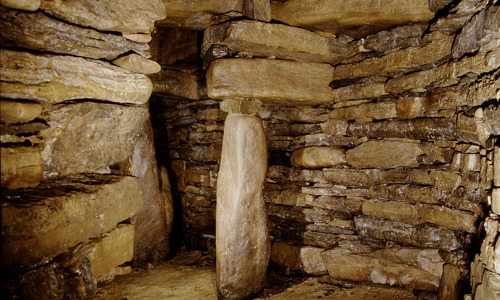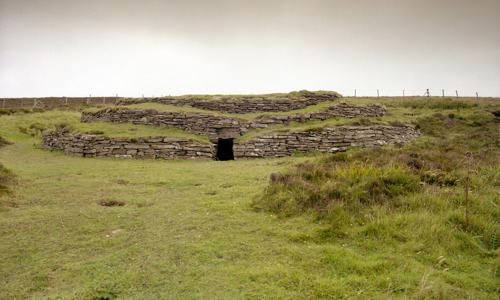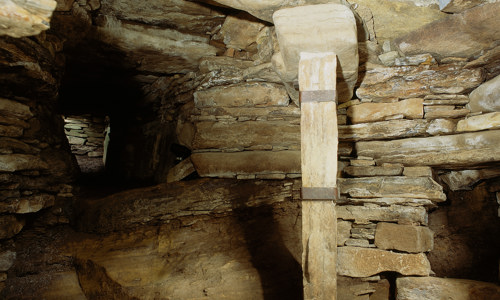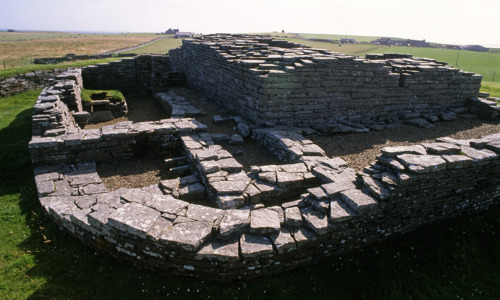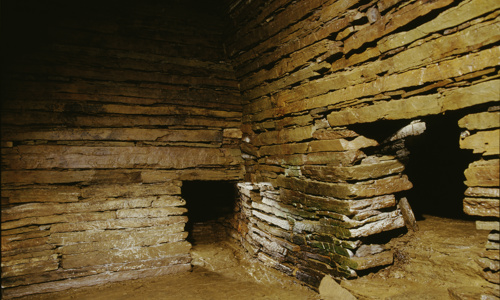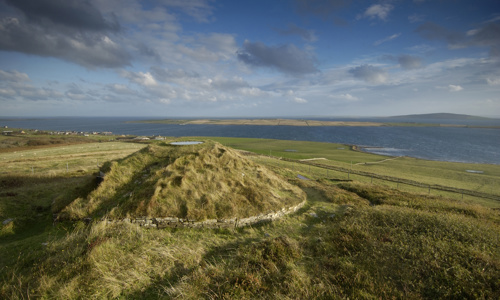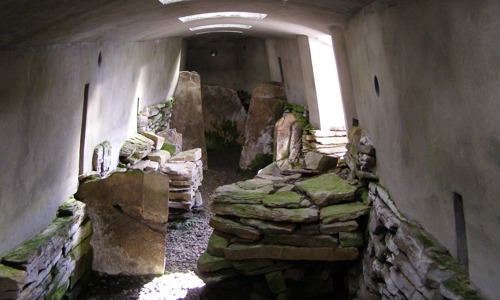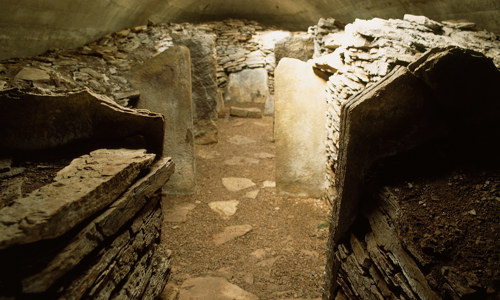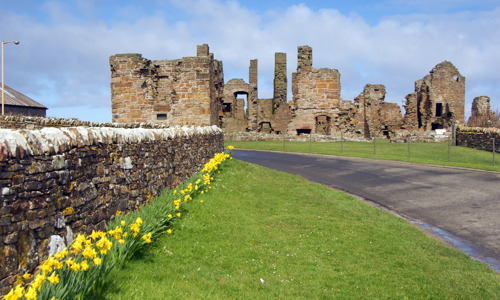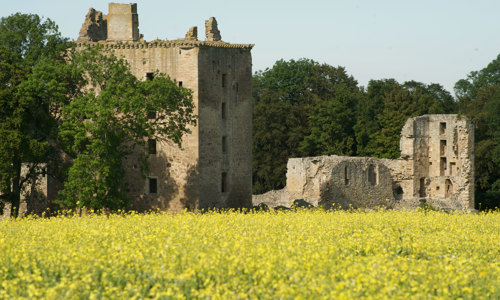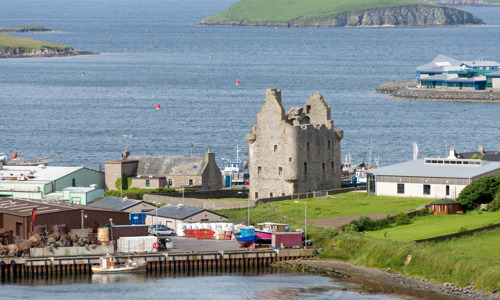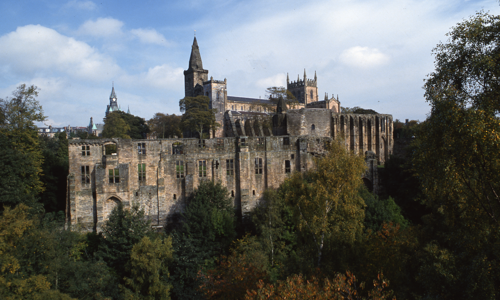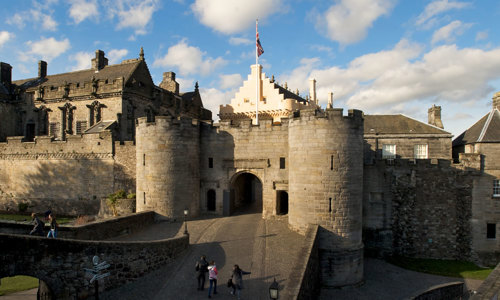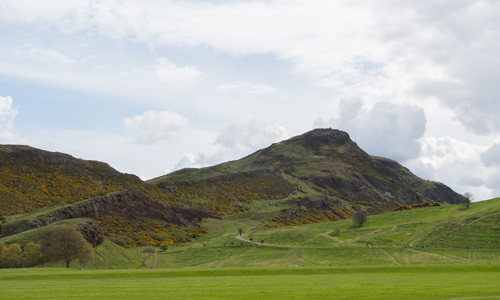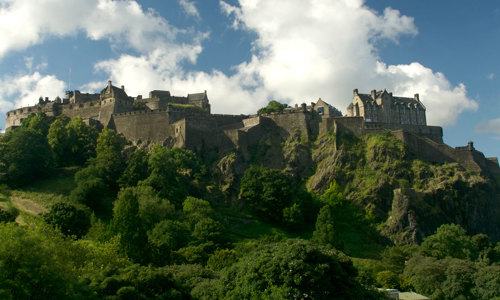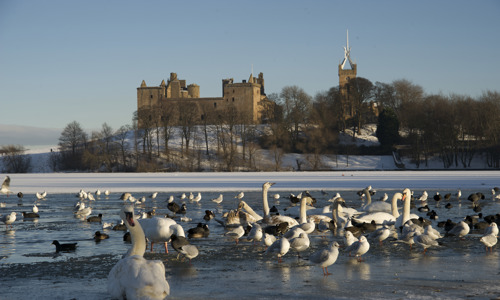History
Kirkwall is today the capital of Orkney but was for centuries the capital of the Norse-held Nordreyjar – the ‘Northern Isles’. James III of Scotland annexed the islands in 1472 after his bride’s father, Christian I of Denmark-Norway, failed to pay her promised dowry.
The Bishop’s Palace is the only episcopal palace ever built in Norse Scotland. It is described in the Saga of Haakon Haakonsson.
The Earl’s Palace, built much later, is one of the most accomplished examples of Renaissance architecture in Scotland.
The Bishop’s Palace
The Bishop’s Palace was built around the same time as St Magnus Cathedral, in the early 1100s. The builder may well have been Bishop William the Old, crusader and friend of Earl Rognvald, St Magnus’s nephew and patron of the new cathedral.
The palace is a little difficult to work out at first sight. But behind all the later alterations and additions lies a simple, two-storey hall house.
Little of the first floor hall remains, but the ground level is largely intact. The west wall’s narrow windows, built of alternating red and yellow stones, are similar to those in the cathedral.
Haakon’s last breath
Haakon IV of Norway died in the Bishop’s Palace on 15 December 1263 – and the Saga of Haakon Haakonsson includes an invaluable description of the palace at the time of the king’s death. The king had just arrived from a failed expedition to the Firth of Clyde, which ended at the Battle of Largs when his forces were driven off.
After the king died in his bedchamber, his body lay in state in the palace’s hall. Haakon IV was the last Norwegian king to rule over the Sudreyjar – the ‘Southern Isles’ or Hebrides.
The Earl’s Palace
The Earl’s Palace was built around 1606 by Patrick, Earl of Orkney.
Known as ‘Black Patie’, the earl ruled the Northern Isles from 1592 until his execution 23 years later. It was alleged at the trial of the authoritarian ruler that he used slave labour to build his residences.
His Kirkwall palace still has the power to impress. It is masterfully planned, spacious and extraordinarily refined.
The palace comprises:
- a first floor hall reached via an elaborate staircase
- the earl’s inner and outer chambers – at its north end
- guest chambers
- accommodation for key staff
Outside, the eye is drawn to the frontal façade. Inside, the first floor hall with its two large fireplaces – one of which is 5 metres wide – makes the biggest impact.


